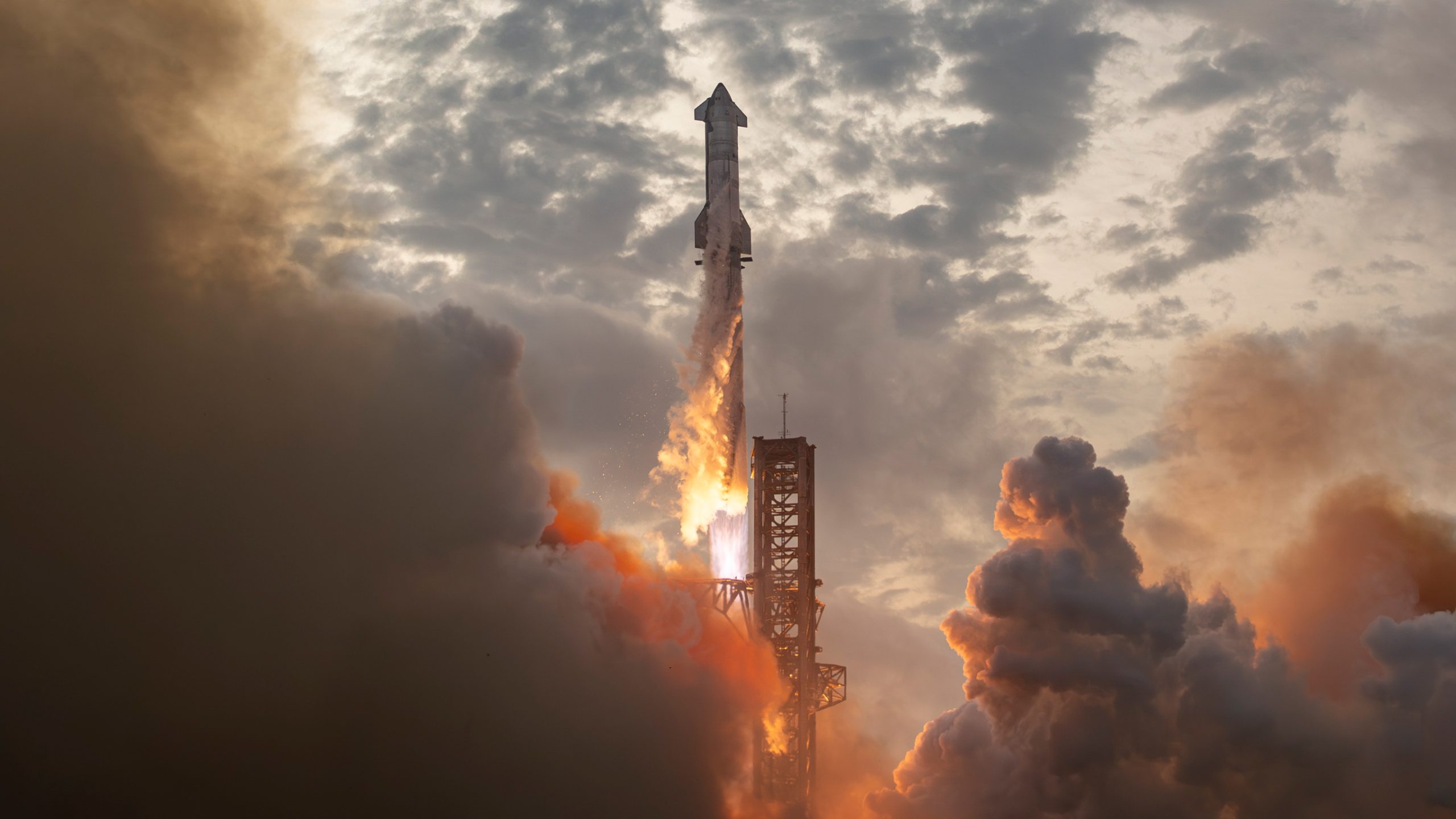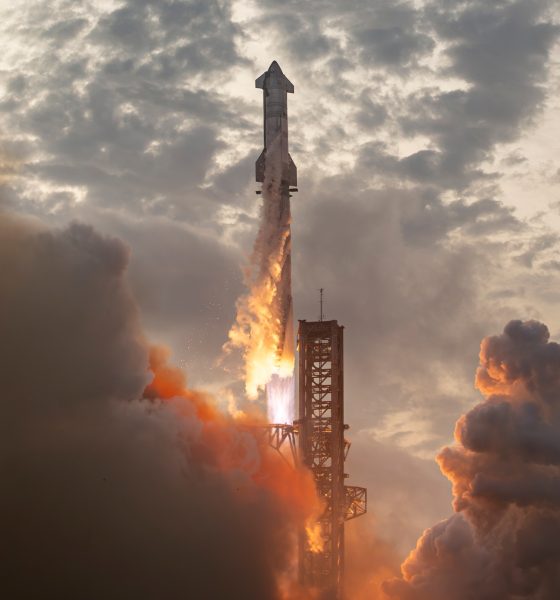

News
SpaceX hits back at FAA in scathing new letter, claiming fines were retaliation
SpaceX has released a scathing new letter that it has sent to the Federal Aviation Administration (FAA), criticizing its “lack of resources to timely review licensing materials” and claiming the recently announced fines of over $600,000 are retaliation for “increased scrutiny” on the Office of Commercial Space Transportation (AST).
The space exploration company and the regulatory agency are clearly in a very public feud that now seems to be going in a direction that will not benefit either party.
SpaceX released a blog post earlier this month that talked about regulatory delays, and how Starship had been ready to take its fifth test flight, but the FAA had given an estimated approval date of November, well past the early August date the company had hoped and planned for.
The FAA then fined SpaceX for three different violations related to two flights, which were both launched last Summer in June and July.
Just a day after the FAA announced these fines, SpaceX has released a letter to FAA Chairs Frank Lucas and Maria Cantwell, as well as Ranking Members Zoe Lofgren and Ted Cruz.
SpaceX alleges in the letter that the AST and FAA have not been able to complete a timely review of licensing materials, and the lack of streamlining in this process has not only hurt the development of its technologies but also impacted “national security and national priorities.”
The company also claims the $633,009 in penalties could be a potential retaliation for criticism it has passed to regulatory agencies:
“Most recently, the FAA alleged that SpaceX violated its regulations and proposed a $633,009 penalty for these alleged violations. It is notable that these violations and penalties were announced shortly after increased scrutiny on AST by Congress for its failure to reasonably and timely execute its regulatory obligations. It is also notable that, in announcing these penalties, FAA’s politically appointed Chief Counsel was quoted in the FAA’s announcement on the matter. It is SpaceX’s understanding that it is highly irregular, and perhaps unprecedented, for a Chief Counsel to be quoted on an enforcement matter. SpaceX forcefully rejects the FAA’s assertion that it violated any regulations.”
CEO Elon Musk has already revealed that SpaceX will sue the FAA, claiming “regulatory overreach.”
SpaceX goes on to clap back at the FAA’s fines, breaking down each supposed violation and challenging the communication and legitimacy that the agency and the AST used to penalize that company.
Each rebuttal from SpaceX shows the FAA did not communicate in a timely fashion with the company, along with other pieces of evidence that challenge the legitimacy of the fines.
For nearly two years, SpaceX has voiced its concerns with the FAA’s inability to keep pace with the commercial spaceflight industry. It is clear that the Agency lacks the resources to timely review licensing materials, but also focuses its limited resources on areas unrelated to… pic.twitter.com/2NJu00ZLiW
— SpaceX (@SpaceX) September 19, 2024
It is clear SpaceX is not going to take the fines laying down and will likely challenge the FAA at every step. Whether this will result in more streamlined approval processes for future launches remains to be seen.
One thing is clear: SpaceX has one heck of a backbone, and it will refuse to be pushed around by regulatory agencies, especially if it feels there is a political motivation behind the exentsive delays.
I’d love to hear from you! If you have any comments, concerns, or questions, please email me at joey@teslarati.com. You can also reach me on Twitter @KlenderJoey, or if you have news tips, you can email us at tips@teslarati.com.

Elon Musk
Elon Musk’s X will start using a Tesla-like software update strategy
The initiative seems designed to accelerate updates to the social media platform, while maintaining maximum transparency.

Elon Musk’s social media platform X will adopt a Tesla-esque approach to software updates for its algorithm.
The initiative seems designed to accelerate updates to the social media platform, while maintaining maximum transparency.
X’s updates to its updates
As per Musk in a post on X, the social media company will be making a new algorithm to determine what organic and advertising posts are recommended to users. These updates would then be repeated every four weeks.
“We will make the new 𝕏 algorithm, including all code used to determine what organic and advertising posts are recommended to users, open source in 7 days. This will be repeated every 4 weeks, with comprehensive developer notes, to help you understand what changed,” Musk wrote in his post.
The initiative somewhat mirrors Tesla’s over-the-air update model, where vehicle software is regularly refined and pushed to users with detailed release notes. This should allow users to better understand the details of X’s every update and foster a healthy feedback loop for the social media platform.
xAI and X
X, formerly Twitter, has been acquired by Elon Musk’s artificial intelligence startup, xAI last year. Since then, xAI has seen a rapid rise in valuation. Following the company’s the company’s upsized $20 billion Series E funding round, estimates now suggest that xAI is worth tens about $230 to $235 billion. That’s several times larger than Tesla when Elon Musk received his controversial 2018 CEO Performance Award.
As per xAI, the Series E funding round attracted a diverse group of investors, including Valor Equity Partners, Stepstone Group, Fidelity Management & Research Company, Qatar Investment Authority, MGX, and Baron Capital Group, among others. Strategic partners NVIDIA and Cisco Investments also continued support for building the world’s largest GPU clusters.
News
Tesla FSD Supervised wins MotorTrend’s Best Driver Assistance Award
The decision marks a notable reversal for the publication from prior years, with judges citing major real-world improvements that pushed Tesla’s latest FSD software ahead of every competing ADAS system.

Tesla’s Full Self-Driving (Supervised) system has been named the best driver-assistance technology on the market, earning top honors at the 2026 MotorTrend Best Tech Awards.
The decision marks a notable reversal for the publication from prior years, with judges citing major real-world improvements that pushed Tesla’s latest FSD software ahead of every competing ADAS system. And it wasn’t even close.
MotorTrend reverses course
MotorTrend awarded Tesla FSD (Supervised) its 2026 Best Tech Driver Assistance title after extensive testing of the latest v14 software. The publication acknowledged that it had previously criticized earlier versions of FSD for erratic behavior and near-miss incidents, ultimately favoring rivals such as GM’s Super Cruise in earlier evaluations.
According to MotorTrend, the newest iteration of FSD resolved many of those shortcomings. Testers said v14 showed far smoother behavior in complex urban scenarios, including unprotected left turns, traffic circles, emergency vehicles, and dense city streets. While the system still requires constant driver supervision, judges concluded that no other advanced driver-assistance system currently matches its breadth of capability.
Unlike rival systems that rely on combinations of cameras, radar, lidar, and mapped highways, Tesla’s FSD operates using a camera-only approach and is capable of driving on city streets, rural roads, and freeways. MotorTrend stated that pure utility, the ability to handle nearly all road types, ultimately separated FSD from competitors like Ford BlueCruise, GM Super Cruise, and BMW’s Highway Assistant.
High cost and high capability
MotorTrend also addressed FSD’s pricing, which remains significantly higher than rival systems. Tesla currently charges $8,000 for a one-time purchase or $99 per month for a subscription, compared with far lower upfront and subscription costs from other automakers. The publication noted that the premium is justified given FSD’s unmatched scope and continuous software evolution.
Safety remained a central focus of the evaluation. While testers reported collision-free operation over thousands of miles, they noted ongoing concerns around FSD’s configurable driving modes, including options that allow aggressive driving and speeds beyond posted limits. MotorTrend emphasized that, like all Level 2 systems, FSD still depends on a fully attentive human driver at all times.
Despite those caveats, the publication concluded that Tesla’s rapid software progress fundamentally reshaped the competitive landscape. For drivers seeking the most capable hands-on driver-assistance system available today, MotorTrend concluded Tesla FSD (Supervised) now stands alone at the top.
News
Elon Musk’s Grokipedia surges to 5.6M articles, almost 79% of English Wikipedia
The explosive growth marks a major milestone for the AI-powered online encyclopedia, which was launched by Elon Musk’s xAI just months ago.

Elon Musk’s Grokipedia has grown to an impressive 5,615,201 articles as of today, closing in on 79% of the English Wikipedia’s current total of 7,119,376 articles.
The explosive growth marks a major milestone for the AI-powered online encyclopedia, which was launched by Elon Musk’s xAI just months ago. Needless to say, it would only be a matter of time before Grokipedia exceeds English Wikipedia in sheer volume.
Grokipedia’s rapid growth
xAI’s vision for Grokipedia emphasizes neutrality, while Grok’s reasoning capabilities allow for fast drafting and fact-checking. When Elon Musk announced the initiative in late September 2025, he noted that Grokipedia would be an improvement to Wikipedia because it would be designed to avoid bias.
At the time, Musk noted that Grokipedia “is a necessary step towards the xAI goal of understanding the Universe.”
Grokipedia was launched in late October, and while xAI was careful to list it only as Version 0.1 at the time, the online encyclopedia immediately earned praise. Wikipedia co-founder Larry Sanger highlighted the project’s innovative approach, noting how it leverages AI to fill knowledge gaps and enable rapid updates. Netizens also observed how Grokipedia tends to present articles in a more objective manner compared to Wikipedia, which is edited by humans.
Elon Musk’s ambitious plans
With 5,615,201 total articles, Grokipedia has now grown to almost 79% of English Wikipedia’s article base. This is incredibly quick, though Grokipedia remains text-only for now. xAI, for its part, has now updated the online encyclopedia’s iteration to v0.2.
Elon Musk has shared bold ideas for Grokipedia, including sending a record of the entire knowledge base to space as part of xAI’s mission to preserve and expand human understanding. At some point, Musk stated that Grokipedia will be renamed to Encyclopedia Galactica, and it will be sent to the cosmos.
“When Grokipedia is good enough (long way to go), we will change the name to Encyclopedia Galactica. It will be an open source distillation of all knowledge, including audio, images and video. Join xAI to help build the sci-fi version of the Library of Alexandria!” Musk wrote, adding in a later post that “Copies will be etched in stone and sent to the Moon, Mars and beyond. This time, it will not be lost.”








